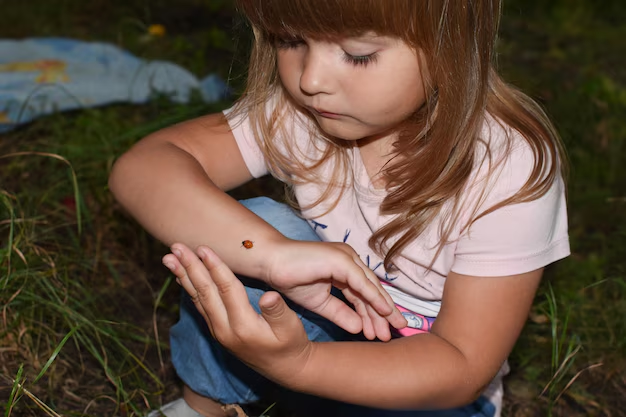Can Lyme Disease Be Cured? Understanding the Journey to Recovery
Lyme disease, a tick-borne illness, has stirred significant concern and curiosity among both medical professionals and the public. With its rising prevalence, many are left asking: Can Lyme disease be cured? This article aims to unravel this question by exploring the complexities of Lyme disease, from its symptoms and diagnosis to treatments and the concept of recovery. We will also delve into the broader context of the disease, providing you with comprehensive information about managing and understanding Lyme disease—even if you can't yet banish it completely from your life.
Understanding Lyme Disease
What is Lyme Disease?
Before knowing whether there’s a cure for Lyme disease, it’s crucial to understand what this disease entails. Lyme disease is caused by the bacterium Borrelia burgdorferi and is transmitted to humans through the bite of infected blacklegged ticks, often referred to as deer ticks. It's most commonly found in North America and parts of Europe.
Symptoms to Watch Out For
Early Signs
- The classic symptom of Lyme disease is the erythema migrans (EM) rash, often referred to as a "bull's-eye" rash.
- Symptoms might also include fever, chills, fatigue, body aches, headache, neck stiffness, and swollen lymph nodes.
Advanced Symptoms
If untreated, the infection can spread to joints, the heart, and the nervous system, leading to:
- Severe headaches and neck stiffness
- Additional EM rashes on other areas of the body
- Arthritis with severe joint pain and swelling
- Heart palpitations or an irregular heartbeat
- Inflammation of the brain and spinal cord
- Nerve pain and problems with short-term memory
Chronic Lyme Disease
For some, symptoms may persist even after treatment, a condition often referred to as Post-Treatment Lyme Disease Syndrome (PTLDS). This can result in long-term fatigue, muscle aches, and cognitive difficulties.
The Diagnosis Challenge
Diagnosing Lyme disease can be tricky, primarily due to its variable symptoms and the similarities to other illnesses. Misdiagnosis is not uncommon, often complicating timely treatment.
Diagnostic Tools
Clinical Evaluation: The first step usually involves evaluating symptoms and potential exposure to ticks.
Laboratory Tests:
- ELISA: The initial screening test to detect antibodies to Borrelia burgdorferi.
- Western Blot: Conducted if the ELISA test is positive, this test confirms the diagnosis by detecting specific proteins.
Treatment Options: Can Lyme Disease Be Cured?
Standard Treatments
The good news is that Lyme disease is treatable, and most cases are successfully resolved with early diagnosis and appropriate antibiotic therapy. The typical course involves:
- Oral Antibiotics: For early-stage Lyme disease, doxycycline, amoxicillin, or cefuroxime axetil are often prescribed.
- Intravenous Antibiotics: Used for more severe cases, especially if the infection involves the central nervous system.
These treatments generally last a few weeks, and most people recover fully, especially if treated promptly.
Post-Treatment Lyme Disease Syndrome
However, some individuals experience symptoms even after completing antibiotic therapy, as mentioned. This is where the concept of a 'cure' becomes more nuanced. PTLDS is characterized by enduring symptoms, though the exact cause remains elusive.
Current Understanding:
- The symptoms could be due to persistent bacteria, damage to tissues and the immune system during infection, or other triggers not entirely understood.
Management of PTLDS:
- Continuous antibiotics are not recommended.
- Symptom management includes pain relief through medication and physical therapy, cognitive therapy, and lifestyle adjustments to combat fatigue and improve overall well-being.
Exploring Alternative and Complementary Approaches
Given the challenges some patients face post-treatment, alternative and complementary therapies are often explored. While scientific evidence is limited, these include:
- Herbal Supplements: Some believe that certain herbs like cat’s claw and Japanese knotweed may support immune health.
- Homeopathy and Acupuncture: Popular among those looking for non-traditional healing methods.
- Diet and Lifestyle Changes: Emphasizing nutrition, stress reduction, and adequate rest as foundational to managing ongoing symptoms.
Important Note: While exploring these options, it’s crucial to consult healthcare providers to ensure they complement standard care effectively and safely.
Prevention: The Best Defense
Since an outright guaranteed cure for all Lyme disease cases doesn't currently exist, prevention remains key. Here are some strategies:
Tick Avoidance
- Avoid wooded and bushy areas with high grass and leaf litter.
- Walk in the center of trails to prevent tick contact.
Protective Measures
- Use insect repellent with DEET, picaridin, or oil of lemon eucalyptus.
- Wear long-sleeved shirts and long pants, with pants tucked into socks or boots.
- Conduct a full-body tick check after outdoor activities.
Immediate Response
If you find a tick attached, remove it with fine-tipped tweezers as soon as possible, pulling steadily without twisting to prevent leaving parts of the tick in the skin.
Promising Research and Future Directions
The field of Lyme disease research is vibrant, with studies exploring new diagnostics, vaccines, and treatments. Though we've made significant progress, the complexity of Lyme disease necessitates continued innovation and understanding.
Vaccination Developments: Efforts towards creating an effective Lyme disease vaccine are underway and could potentially offer a pivotal tool in prevention.
Cutting-edge Research: Research into new antibiotics, therapies targeting chronic Lyme conditions, and immune system innovations holds promise for more comprehensive solutions.
Overall, while Lyme disease presents challenges, the prognosis for most individuals is favorable, especially with early recognition and intervention. Proactive prevention and continued research efforts enhance the outlook for those affected by Lyme disease now and in the future.
Summary: Key Takeaways on Lyme Disease 🧩
- Recognize Symptoms: Early identification is crucial—look for the "bull's-eye" rash and flu-like symptoms.
- Seek Timely Treatment: Antibiotics are effective, especially when initiated early.
- Understand PTLDS: Persistent symptoms are not uncommon; manage through holistic care without extended antibiotics.
- Prevent Tick Bites: Use repellent, wear protective clothing, and check for ticks after outdoor activities.
- Explore New Research: Stay informed about emerging therapies and preventative measures in the pipeline.
By staying informed and proactive, you can better navigate the complexities Lyme disease presents, ensuring the best possible outcomes for health and well-being.
